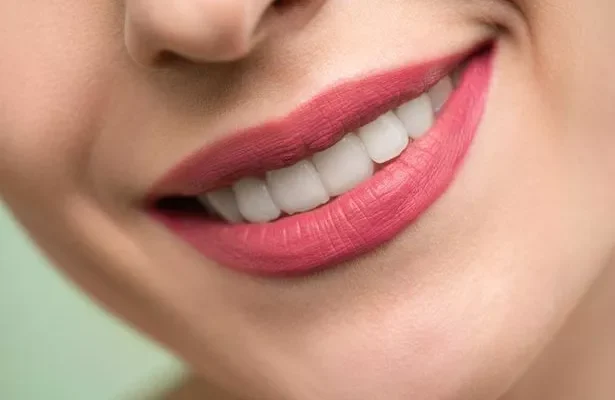Can you grow a bonsai tree indoors? The answer is yes, you can. One type of bonsai tree that can be grown indoors is Ficus. This plant has a high tolerance for low humidity and can survive indoors well.
Unfortunately, you can’t grow non-tropical bonsai trees indoors. Because, in the changing season from winter to spring, it is also a bonsai tree changing cycle. Plants need to prepare to regrow in spring, so light and temperature will gradually decrease over a few weeks. Plants will not survive if kept indoors.
Read More: Slate Roofing
How to plant and care for an indoor bonsai tree
If you want to grow an indoor bonsai tree, put it in a pot or container large enough. Because if using the small one, it not enough space for the water and nutrients that plants need.
- Provide Light
Like sunflower bouquet, The intensity of light indoors is much lower than outdoors, which is too little indoor light for a bonsai tree. If it doesn’t get the light it needs, the plant won’t die right away. However, its decreases growth and weakens the plant. Set the bonsai near a large window with a bright spot exposed to sunlight. You can also supplement artificial lighting using fluorescent lamps or light-emitting diodes for 10 hours per day.
- High Humidity
Growing tropical bonsai trees indoors often has other problems with low humidity. Level humidity indoors is lower, especially with air conditioning, which will reduce air humidity which can be fatal for bonsai. Bonsai trees require high humidity. Then you can add moisture by placing a tray full of water around the plant or spraying water several times a day. You can also open the window so that air circulation helps meet the humidity needs of the bonsai tree.
- Water and fertilizer
One of the rules in growing a bonsai tree is to avoid giving it water and fertilizer regularly. Make sure to water when it is dry using a moisture meter or fingers and chopsticks. Bonsai do not need fertilizer because it is grown indoors and placed in pots. It is necessary to provide a little more fertilizer as nutrients.
- Maintain the right temperature
Bonsai trees need the right temperature to grow. Do not place tropical bonsai trees in a room where the temperature drops to freezing point easily. Meanwhile, subtropical bonsai trees can tolerate lower temperatures better. Likewise, semi-tropical bonsai trees which usually grow better when the temperature drops. Caring for indoor bonsai is holistic, so it is necessary to consider all aspects well.
- Replacing pots
Bonsai trees need to be potted every year to three years, depending on the plant. The right pot for planting a bonsai tree is a container that has holes for drainage. If you don’t use the pot when you buy it, then replace it as soon as possible.
Types of indoor
Bonsai trees have several types and categories. But there are only two criteria for bonsai trees that can be grown indoors, namely tropical and subtropical bonsai. The following are six that fall into the tropical and subtropical categories.
- Ficus
The best indoor bonsai tree for beginners is the Ficus. If some indoor bonsai require lots of light and high humidity, Ficus is a hardy and adaptable plant. This plant can handle low humidity and little light indoors well. Ficus bonsai is famous for its bright green leaves with pointed ends. There are several popular Ficus options, such as Ficus Benjamina and Ficus Retusa.
- Carmona
It is also known as Fukien Tea. Popular because it can thrive indoors and also has small white flowers that bloom all year round. This plant also produces red fruit. To grow, Carmona needs strong light and some time outdoors in the spring and summer.
- Schefflera
A bonsai tree is similar to Ficus, in that it can survive in low light and low humidity. This Dwarf Umbrella Tree has a thin trunk and canopy growth. Unfortunately, this plant does not work well with wiring, so if you want a plant that can be molded don’t choose Schefflera.
- Chinese Elm
If you want a classic bonsai tree shape, then Chinese Elm Bonsai is the choice. This plant is also suitable for growing indoors. They grow quickly and can be trimmed or shaped as desired. If there is too little or too much water, it will not be too bad for the Chinese Elm.
- Crassula (Jade)
Shaped like a shrub, has thick stems and leaves. Crassula can withstand cold temperatures, so it can be grown indoors. They store the juice in their leaves, so avoid watering too often. Be sure to place the Crassula Bonsai in a pot that drains well.
- Serissa Japonica (Snow Rose)
Thanks to its tiny snow-white flowers, Serissa Japonica is also known as the tree of a thousand stars. This plant is very easy to care for indoors. They are sensitive to changes in temperature, location, light, and humidity levels, so they can grow either indoors or outdoors depending on the weather where you live.
How long do indoor bonsai trees live?
Then it is possible to grow a bonsai tree indoors. The most important thing is to provide all the necessary elements to survive and adapt to the situation in the room. By providing the right levels of light, humidity, temperature, water, and fertilizer, bonsai will grow healthily.
After that, be patient. Let the bonsai grow slowly. He will grow strong and last 50 to 150 years.
To choose the type of bonsai tree indoors, you can see it at Bonsai Tree.
Source:
https://www.bonsaitreegardener.net/care/how-to/alive-indoors
https://bonsairesourcecenter.com/the-6-best-indoor-bonsai-tree-types-how-to-care-for -them/
https://bonsaistarter. com/how-long-do-indoor-bonsai-trees-live/





More Stories
Renovating with Flair: Unlocking the Potential of Edinburgh’s Historic Homes
Bryson Rubbish Clearance: Your Trusted and Eco-Friendly Rubbish Removal Partner in Canterbury and Medway
Building Safety with Fire Curtains